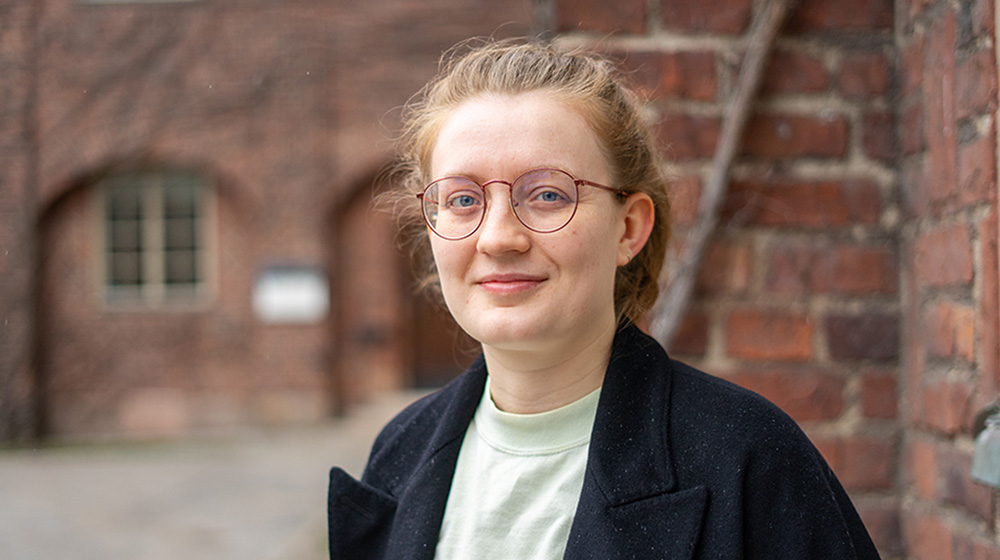KTH Chemist chosen for sought-after program

KTH Postdoc Daisy Pooler has been selected for the CAS Future Leaders program. She is the first chemist from a Swedish university to be chosen in more than ten years.
“I think it’s an excellent opportunity to meet like-minded chemists and to expand my research network, so I am really happy to be picked. I’m also rather surprised, I was not expecting to be accepted onto the program, but it was certainly really good news!” says Daisy Pooler.
The CAS Future Leaders program offers leadership and storytelling training to early-career scientists. The participants also gets the chance to present their own work at the American Chemical Society Fall conference in Denver this year. Daisy Pooler and the 34 for other researchers participating this year, were selected from among hundreds of highly qualified applicants, representing a wide array of scientific disciplines and organizations from around the world.
“I have guided many students from the BSc, MSc and PhD level, and I came up with a few projects of my own during my PhD which worked out nicely and have since been published. I also managed to score a Marie-Sklodowska Curie grant for my postdoc research here with my current supervisor, Dr. Fredrik Schaufelberger, which boosts my CV quite a bit. Fredrik also wrote me an excellent cover letter recommending me for the program, which I think helped my application a lot too!” says Daisy Pooler on why she was selected.
“Try more than once”
She also think the geographical location might have a little to do with it, as CAS strive to select diverse candidates. But ultimately she thinks it comes down to your CV, and showing that you have strong leadership qualities and have demonstrated them throughout your career.
“Another thing. I applied last year but I didn’t get in. This time around I asked for advice from several members of the CAS Future Leaders alumni, which helped me tailor my application towards what they are looking for when I applied this year. It’s not uncommon that they select previously rejected candidates for the program, so it’s worth trying more than once.”
Molecular machines
Throughout her career, Daisy Pooler have been working on molecular machines because she finds the concept really interesting. Basically it means making tiny molecules which can carry out machine-like functions on the nanoscale, which may sound pretty simple but it’s deceptively difficult.
“Compared to the macroscopic machinery that we encounter in everyday life (cars, cranes, computers etc.), molecules encounter different forces that control their movement, like viscosity and motion caused by random thermal fluctuations (i.e. Brownian motion). Harnessing these forces to create controlled movement is very difficult, and something I’ve been fascinated with for many years now,” says Daisy Pooler.
“In my PhD, I did fundamental chemistry on light-driven rotary molecular motors, which through sequential light irradiation and thermal energy input, can rotate solely in one direction with no backwards rotation – in a similar movement to wheels, or the winch on the reel of a fishing rod.”
Works with visible light
The key property of these motors is that they can only move in one direction, in a unidirectional fashion. Over time, this winding rotational movement can be compounded, making light-driven molecular motors key actuators for use in molecular machines.
“I worked on creating new classes of molecular motors, based on heterocyclic scaffolds. These motors have new desirable properties, for example they can rotate under irradiation with visible light which is nice for biological applications, since the usual UV light that is used to typical molecular motors has a poor penetration depth through tissue, and is also damaging to cells.”
In Fredrik Schaufelberger’s research group at KTH, they are also very interested in molecular machines, but they use compounds known as mechanically-interlocked molecules, or MIMs. MIMs are molecules which consist of multiple fragments which cannot be separated from each other unless a covalent bond is broken – like links in a metal chain. Therefore, since the fragments cannot be separated, the entire unit exists as one molecule, with the fragments connected by a mechanical bond.
“Because of the mechanical bond, the components within the MIM have intrinsic freedom and movement with respect to each other, which can be used for building molecular machinery – as we want to, broadly, control movement on the nanoscale. In Fredrik’s group, we also want to interface molecular machines with biology, so a big focus of my work is working with biocompatible compounds that are soluble in water. In a nutshell, I’m working on biocompatible molecular machines here with Fredrik,” says Daisy Pooler.
Text and photo: Jon Lindhe

